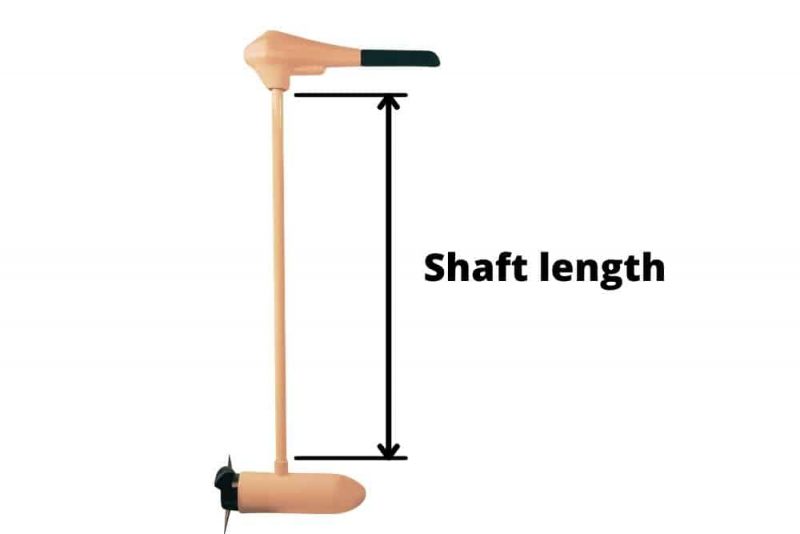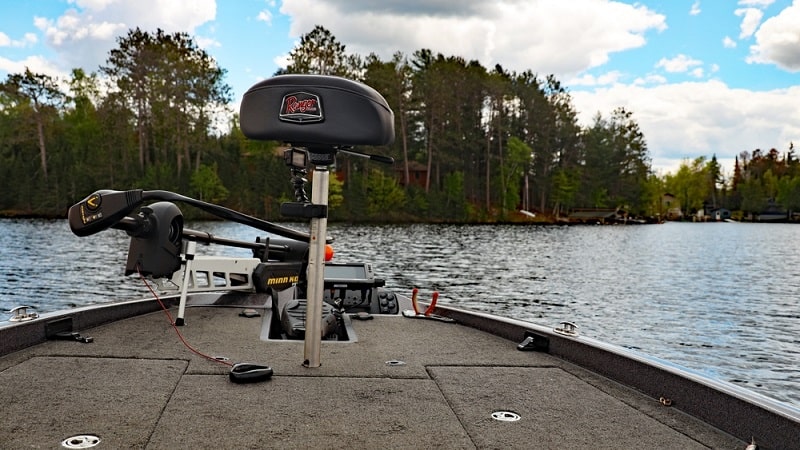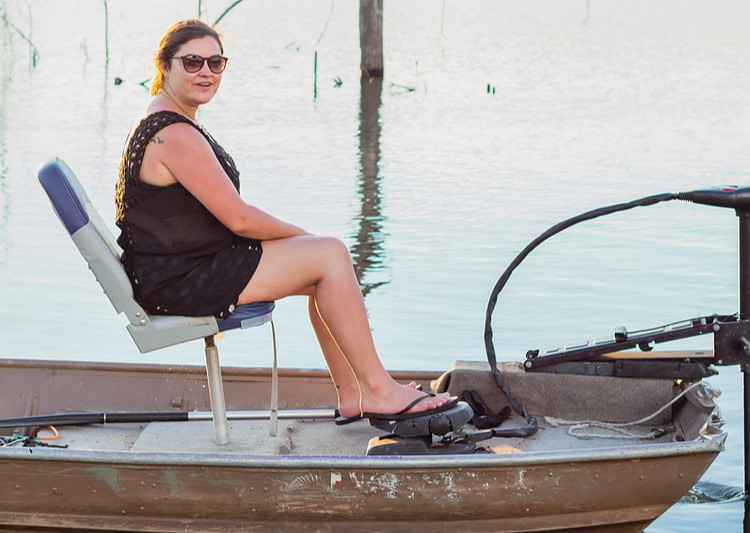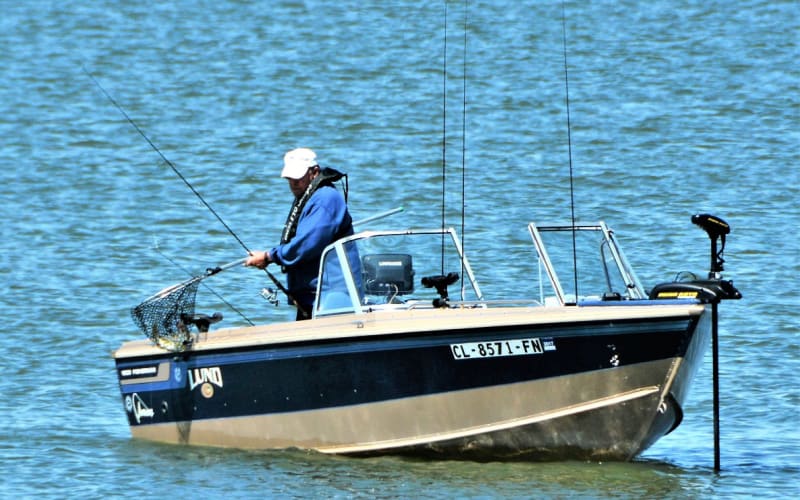Trolling motors were first introduced to the fishing world in 1980 and can be used to maneuver your boat without starting the outboard engine.
Trolling motors are usually mounted at the transom or bow and controlled by hand, foot pedal, or remote control. Choosing the right length shaft for your trolling motor is crucial.
Table of Contents
- What Do Trolling Motors Do?
- Choosing the Right Length for a Trolling Motor Shaft
- How are Trolling Motor Shafts Measured?
- What Depth Should a Trolling Engine Be in the Water?
- Does the Shaft Length Depend on Trolling Motor Types or Boat Types?
- How Can I Ensure the Length of my Bow Mount is Right?
- Is Your Trolling Motor Shaft Too Long?
- Choose the Right Trolling Motor for You
What Do Trolling Motors Do?
Trolling motors are self-contained units that include an electric motor, propeller, and controls. They attach to the angler’s boat at either the bow or stern.
Many fishing boats have electric trolling motors, including bass boats, bay boats, and flats boats. However, they’re often used to maneuver and position boats rather than trolling stealthily.
Choosing the Right Length for a Trolling Motor Shaft

It is crucial to choose the right length shaft for your trolling motor. If you want to provide maximum thrust, the propeller mustn’t touch the waterline.
Although it may seem simple, choosing the longest shaft can result in your propeller and motorhead coming into contact with underwater hazards such as logs and rocks. A longer shaft length can also cause increased drag which will reduce the motor’s performance.
The correct length shaft will prevent noisy cavitation bubbles that can spook fish.
How are Trolling Motor Shafts Measured?
It’s essential to measure the shaft to find out how long it is. The shaft measurement is generally taken from the base to the top of the propeller housing. However, there may be exceptions.
To determine the best length for the shaft of your trolling motor, measure the distance between the shaft and the transom on your boat. Add 16″ for MotorGuide or 20″ for Minn Kota to get the closest measurement.

We recommend that the shafts be longer for operation in rough waters so that the prop remains 6 inches below the water surface during pitching and rolling.
It is relatively easy to measure the correct length of the trolling motor shaft. Some tricks can help you get a precise measurement.
- To get an accurate reading, measure in calm water.
- Measure with full fuel tank, gear, etc. To get an idea of the impact on bow rise, you can use this method. Again, it is essential to measure in “real-world conditions.”
- Take the extra weight above the bow into account. The bow will drop more if you’re in a lighter boat.
- No matter where they are installed, it is essential to consider the weight of the motor and the batteries. Two 12v batteries and a 24v motor can weigh the same as an adult man.
What Depth Should a Trolling Engine Be in the Water?

To ensure sufficient power and prevent cavitation from scaring fish, you will want the motor’s top submerged 12-inches below the waterline.
You can choose a longer length if you are having trouble deciding between two shaft lengths. The depth collar adjustment is available on almost all trolling motors.
If the shaft becomes too long, it can be adjusted upwards. If it is too short, it will be impossible to retrieve your trolling motor.
Does the Shaft Length Depend on Trolling Motor Types or Boat Types?
Where you plan to place the trolling motor determines the trolling motor you would use. There are two types: transom-mounted and bow-mounted.
The bow-mounted trolling motors can be used for trolling but are most commonly used to quietly maneuver your boat around fishing spots. Transom-mounted trolling motors are generally used to move quickly, at one to three miles per hour. Transom motors may also be necessary on smaller lakes, where restrictions on gas motors are present.
Furthermore, the type of boat you use may determine where best to put your trolling motor. For example, bow-mounted trolling motors are often seen on bass and bay boats, while Transom mounts are mainly found on small jons, dinghies, and other lightweight boats.
Boat type and motor placement combined with the water depth, determine how long your trolling motor shaft will be. After all, you do not want your trolling motor to pop up above the waterline or get caught in debris.
How Can I Ensure the Length of my Bow Mount is Right?

Proper shaft length selection with bow mount motors is more vital than with transom mounts. This is because the distance between the bow and water is more variable from one boat to the next, and the bow’s movement on the water is more important than that of the transom.
Therefore, it is necessary to choose the correct length shaft. First, measure the distance between the bow’s horizontal mounting point and the waterline. Add 20 inches to this measurement. You will generally want the shaft length to be equal or greater than this sum but not less.
You should increase the length of your rods by 5″ if you fish in rough waters. This will ensure that the propeller remains submerged despite the extra deck bob required for windy or choppy waters.
If you stand up to control a motor with a hand controller, you should add 12 inches to the transom shaft length.
Is Your Trolling Motor Shaft Too Long?

If you are unsure what length your trolling motor shaft should be, it may seem like a good idea to get the longest option. However, you don’t want to have a shaft that is too long.
Consider how you use your boat and where your motor is mounted. If a shaft is too long, you may have trouble navigating shallow waters.
Choose the Right Trolling Motor for You
There are many things to consider before choosing the correct length of your trolling motor shaft. You must think about the trolling motor you use, the type of boat you own, how you want to use the trolling motor, and how deep or shallow the water may be.
As you can see, there are many trolling motors and boat types. Therefore, you must be sure of your purpose for your trolling motor and research each type well before you make a final call.

I created this site to help people – to help you – with your boat problems. Instead of helping one person at a time, I want this website to be the “one-stop-shop” for everyone’s boating concerns. Read more.

